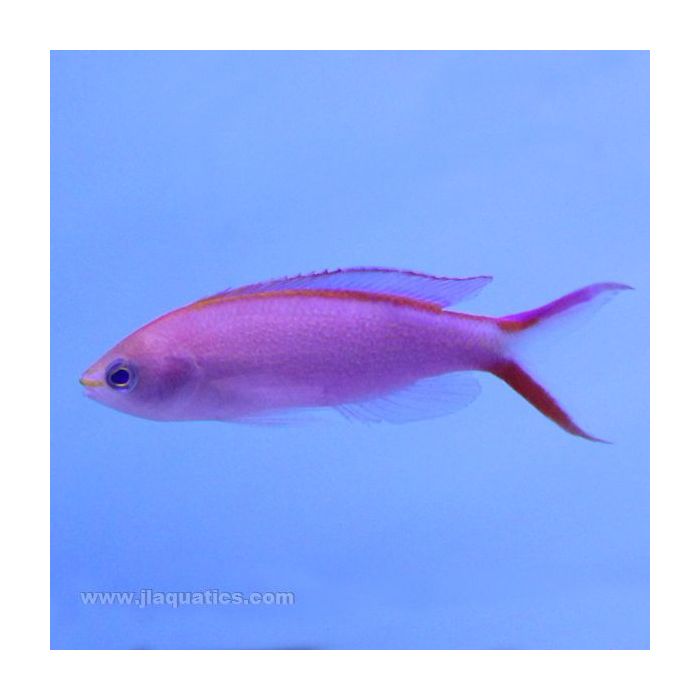Princess Anthias - Male (Asia Pacific)
Anthias are active, colorful, reef safe, and generally quite peaceful fish. They pose little to no danger to any other aquarium inhabitant, other than small competing zooplanktivores, such as dart fish and flasher wrasses, which they may chase into hiding.
The key to success with anthias is frequent feeding. Because of their activity level they have a very high metabolic rate, and should be fed a minimum of three times daily. Diet should include plenty of high quality meaty items such as frozen Mysis shrimp, marine algae and Spirulina, enriched brine shrimp and Calanus. Anthias are such enthusiastic feeders they usually learn to eat dry foods quickly, but if they are fussy the dry food can be mixed in with the frozen to encourage consumption. A refugium is helpful in supplementing the main aquarium with live prey items. Additional supplements and vitamins may also aid in maintaining the fish's vivid colors.
Anthias are prone to jumping from the aquarium when startled or excited so we recommend a secure lid.
In the wild most anthias species are found in huge shoals consisting of mainly females and juveniles. In the aquarium they are perfectly happy alone, but if a shoal is desired the aquarium must be of sufficient size to ensure the smallest and weakest fish have space to escape the larger and more aggressive members. A group of at least six females added together can work, and in time the largest fish transforms into the dominant male. He is typically brighter and more colorful than his harem. If he will be added together along with his shoal then as many females and juveniles as possible should be added.
The Princess anthias is a charming fish with shining colors. Ruby red to bright magenta coats most of the fish, with glittering golden highlights sprinkled over its back, and red edging to its tail. Males have brighter colors overall and grow larger.
The Princess anthias is recommended only for the experienced and dedicated aquarist who can ensure they receive enough nourishment. It should be fed at least four times a day. Lower light levels aid in acclimation, as does an established group of peaceful zooplanktivores who are feeding well on prepared foods. Aggressive tank mates should be strictly avoided. Well oxygenated, high flow conditions with plenty of hiding places and open room to swim help the Princess anthias feel at home. As a deeper water species they do best at temperatures from the high 60s to low 70s Fahrenheit. It grows up to 3.5 inches we recommend an aquarium of at least 75 gallons for a single fish and larger for a group.

